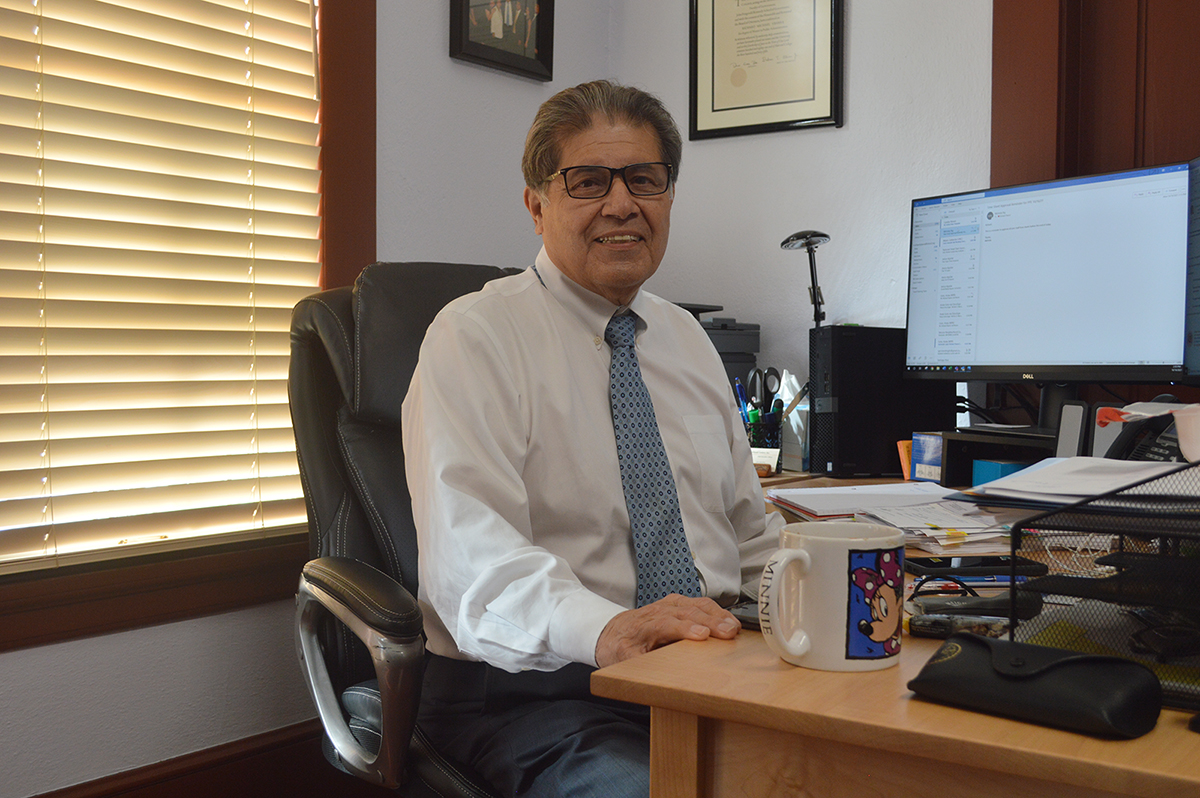His plans are to get more funds and expand the programs to other counties
by Araceli Martínez
Almost seven months after assuming the position of executive director of Mission Neighborhood Centers (MNC), Richard Ybarra revealed that he feels very comfortable.
“I am where I want to be, where I should be, where life brought me,” he said in an interview with El Reportero.
Ybarra replaced Sam Ruíz, who retired from the position 40 years after working for Mission Neighborhood Centers.
What were the most pressing issues he encountered on March 1 when he took over MNC?
“I reached the best organization of my career. The quality is high and I have a great team.”
But two or three weeks later, Richard realized that the Mission Neighborhood Centers name needed to be promoted further.
“We have an organization that has done so much work with such success, but we do it under various names, but not under our own name.”
So he set about asking the people they bring food to if they knew where it came from. “It comes from the government, they told me, but no one mentioned our name.”
The same thing happened with the Head Start program, too. “I spoke to 90-something parents, and they told me how much they loved Head Start, but never mentioned our name.”
As a consequence, in the coming months, the new leader of the MNCs said that they will work so that the area where the name of the organization is located appears on all campuses.
Communication failures
Richard said another problem he observed is communication. “So many years of effort and services, but we have not communicated them to the community. We want to change that so they know what we are doing.”
He showed that they also seek to diversify their funds.
“Apart from the government funds that reach us in amounts up to 24 million dollars per year, we want to seek resources without restrictions. For that we need to spread our story, so that high-income people know what we are doing and support us.”
What most pressing problems have you encountered in the community?
“In any year, the situations poor people live under are important and significant. During the pandemic, their problems increased. In this city, the cost of living is the highest in the entire state. It is very difficult to be poor in San Francisco.”
And he adds that the displacement of Latinos continues. “What happens with the high cost of living is that many families are moving out of the Mission neighborhood because it costs a lot to live here.”
He noticed it himself when he moved his family from San Diego to San Francisco.
“From my point of view, the cost of living is almost double between San Diego and San Francisco. A haircut costs $18 there, $38 here; a car wash, there $15, here $28 or $30. The cost of rent for a two-bedroom apartment is $2,900 in San Diego; and here of $3,900 or more.”
But even though the problems have grown with the pandemic for Latinos, he acknowledged that he is comforted to know that at the same time, the efforts of families to survive and face all obstacles are growing. “Organizations like ours also look for a way to assist them.”
Have you noticed an increase in homeless Latinos in San Francisco?
“Maybe yes, but there is an explanation. Unlike other groups, precisely because of the high cost of living, Latinos are one step away from being homeless. Technically there would be more homeless on the streets, if not because we live in a living room, a car, a patio, a garage, a bedroom. By living in these circumstances, Covid touched us more.”
What will be your priorities for the remainder of the year and 2022?
“I have seven months, and almost eight months in the position. At nine months, I will begin to form new plans for the coming year. Now we want to continue with the programs that we have, to continue helping the elderly, the young and with the preschool programs,”
He said that under the rental assistance program, they distributed more than $3 million to 400 families, many of them elderly.
One of his plans is to seek more non-government funds to start programs and help people in other counties like San Mateo, Contra Costa, Monterey.
“Groups from those counties have approached us and we are exploring moving out of here a bit. We hope to be able to help more in the future.”
Currently, he said they help 15,000 people a year, but he would very much like to expand and assist 30,000. “The need is growing and our capacity must grow to help more families.”
Therefore, he indicated that his priority is to continue with what they have to expand immediately.
In recounting the seven months that he has led the Mission Neighborhood Centers, Richard said that he has not had a bad day. “This job is the dream of my life. Never in my life until I



